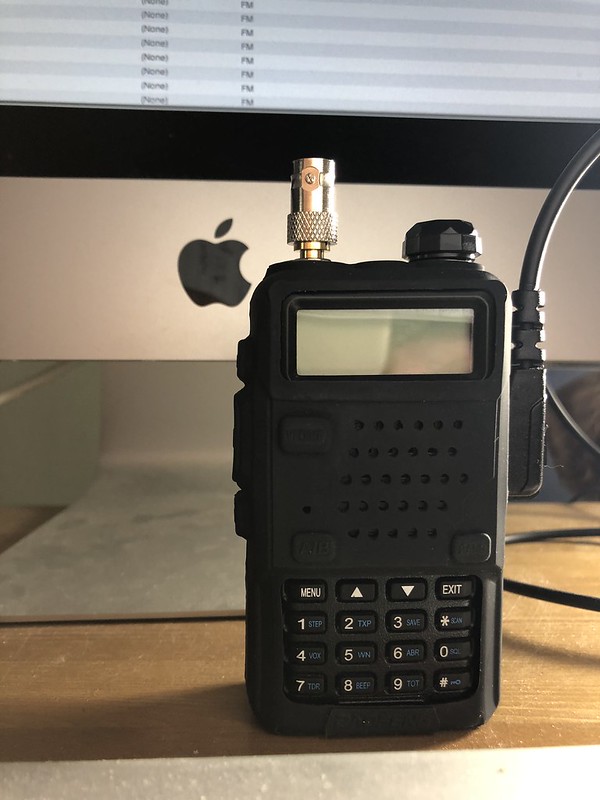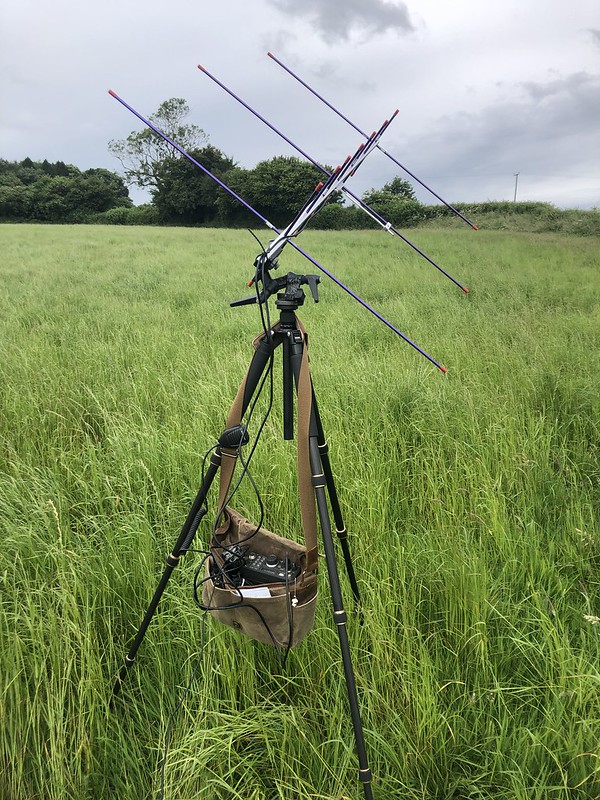Equipment
One of the surprises about working the satellites is just how accessible they can be. If you have visions of top-end radios, masthead pre-amps, rotators that can control azimuth and elevation, and quad Yagi arrays, then forget all that. That gear would be lovely (and is possibly required for moonbounce – or EME – working) but is not needed to get started.
Radio
You can access the FM satellites with a £35 Baofeng hand-held radio, or similar. What you will need to do though is to be able to program it through CHIRP software, which is available here (or the relevant software for your radio). We’ll take a closer look at how to program the Baofeng UV-5R series of radios in another article.
You won’t need to program anything though, to start receiving the satellites.
Once you know which satellite you want to listen to, use the tracking app or a suitable satellite tracking website to find the downlink frequency. Remember about the Doppler shift if it’s a UHF downlink – start about 10kHz above the ‘base’ frequency and work down in 2.5kHz or 5kHz steps.
Antennas
You can receive a powerful satellite, such as the ISS, just using the hand-held antenna – reception will be limited but it is possible. For receiving, you will only need the relevant aerial for the downlink band; inevitably however, you’ll want to get transmitting too (if you’re licenced) and for that a dual-band aerial will be needed.
You can make these quite simply and if that’s the route you’d like to take, then head on over to these resources for some inspiration:
- https://www.para.org.ph/para-making-a-dual-band-satellite-antenna.html
- http://www.wa5vjb.com/references/Cheap%20Antennas-LEOs.pdf
For many people, the ever popular Arrow II 146/437 antenna works well and provides easy setup and portable usage.
This antenna can be disassembled and easily carried, providing a very portable solution. I can personally recommend it as I don’t have a base station and all my satellite work is operating as G7BEH/P from nearby fields! I made a roll-up case for it, but you can also purchase the proper Arrow II bag.
Duplexor
Once you start making contacts, if you’re using a single radio for transmit and receive, you’ll essentially need two antennas (hence the dual-band ones as above). To feed those aerials, you’ll need to take a coaxial cable from your radio, to a duplexor, which will split the output… one for VHF and the other for UHF.
The duplexor is just a low-pass filter for VHF and a high-pass filter for UHF, and you can purchase it fitted to the Arrow II, or make your own.
In fact, I’d recommend using one even if you have two radios and two antennas as putting it in the receive side will reduce desense of the receiving radio when you transmit.
Audio Recorder & Headphones
Strictly speaking these are not necessary but they will make life a lot easier! Take the audio from the radio, feed it into the recorder and record the pass. When you start transmitting and making contacts, there’s quite a lot going on and it is much easier to listen back to the pass and make sure you’ve copied down callsigns and locator squares correctly.
I use a very basic Zoom H1 audio recorder, which allows me to plug the radio audio into it one side, and take an output to the headphones on the other. Whichever recorder you use, do take the trouble to set the date and time on it as this can be very helpful later on when logging the contacts.
Summary
The above is enough to get you receiving the satellites and working them. As of 2022, the Baofeng radio is approx. £35, the Arrow II antenna about £95 and the duplexor £40. For well under £200, you’ll have a basic setup that will get you started and going down the DIY route would make that much cheaper still.
In the next article, we’ll look at accessing the satellites and what to expect.




